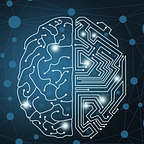The Threats and Opportunities for AI in Healthcare
AI in health care involves using machine-learning software and algorithms or AI to imitate human cognition in the comprehension, analysis and presentation of complex health and medical care data. The major goal of health-related artificial intelligence is to examine relationship between treatment or prevention techniques and patients’ outcome. The article seeks to discuss on the opportunities and threats for AI in healthcare.
Opportunities for AI in Healthcare
Support in clinical decisions
AI technology has created various opportunities in the healthcare industry; it has facilitated support in clinical decisions. It’s imperative for healthcare professionals to put every bit of information into consideration during patients’ diagnosis. This results in sifting via different complex unstructured notes held in medical records. In case of an error in monitoring a single important fact, patient’s life would be threatened. However, Natural Language Processing (NLP, a constituent of Artificial intelligence (AI), increases convenience enabling doctors to pin-down all important information contained in patient reports. Additionally, AI possesses the ability to store and possess large data sets that can facilitate every patient’s assessment and recommendation, therefore helping improve clinical decision support (Pesapane et al., 2018).
ChatbotsAI
Further, AI has enhanced primary care and Triage through ChatbotsAI, facilitating automation and smooth primary care flow, thus allowing doctors to concentrate on more dire and important cases. Medical chatbots can benefit patients by helping them saving money through avoidable visits to the doctor. These chatbots, which are AI-powered system, incorporated with efficient algorithms giving patients instant answers to every health linked concerns and questions while also offering them guidance concerning ways of dealing with any possible problems (Pesapane et al., 2018).
AI virtual nursing assistants
Health facilities have benefited from AI virtual nursing assistants.AI systems enhance virtual nursing assistants capable of performing various tasks, including conversing with patients and directing them towards the effective and the best care unit. These virtual assistants are in service 24/7 and can answer questions and examine patients and give instant solutions. Most of the AI-powered tools of virtual nursing assistants such as Care Angel currently enhance increased regular interactions between care providers and patients to prevent unnecessary healthcare facility visits.
Assist in diagnosis
Lastly is assisting inaccurate diagnosis. AI can surpass human doctors and assist them in the prediction, detection and diagnosis of diseases at a faster and more accurate rate. Additionally, AI algorithms have proved cost-friendly concerning diabetic retinopathy detection. One good example is in the use of Buoy Health, a checker of cure and symptoms that utilizes algorithms to diagnose and treat illness.
Threats for AI in Healthcare
AI technology has created several risks in healthcare that need to be addressed. Such threats include errors and injuries.
Inaccuracy
One major risk held by AI in healthcare is that the AI system may sometimes be wrong; for instance, if it proposes an inappropriate drug to patients or conducts a mistake in tumor location in radiology scan, it could lead to patients’ injury dreadful health-related outcomes.
Data availability
Training AI systems calls for massive data amounts from multiple sources, including electronic health records, pharmacy records, insurance claim records and many others. Because of data fragmentation and patients frequently seeing different care providers or changing insurance companies, data becomes complicated and less understandable, which in turn escalates the risk of error and data collection costs (Pesapane et al., 2018).
Shifts in the profession
This can be possible in areas such as radiology, where the majority of work becomes automated. This raises the issue that a high AI use rate causes a decline in human capacity and knowledge for years, causing care providers’ failure in the detection of AI mistakes and further medical knowledge development.
In conclusion, AI technology has enhanced a wide range of opportunities in health by increasing healthcare outcomes. These include providing support in clinical decisions, enhancing primary care and triage through chatbots, virtual nursing assistants, and accurate diagnosis. However, AI technology continues to loom over particular perils and dangers in data availability, errors and risks, bias and inequality and the possibility of causing shifts in the profession.
Reference
Pesapane, F., Codari, M., & Sardanelli, F. (2018). Artificial intelligence in medical imaging: threat or opportunity? Radiologists again at the forefront of innovation in medicine. European radiology experimental, 2(1), 1–10
